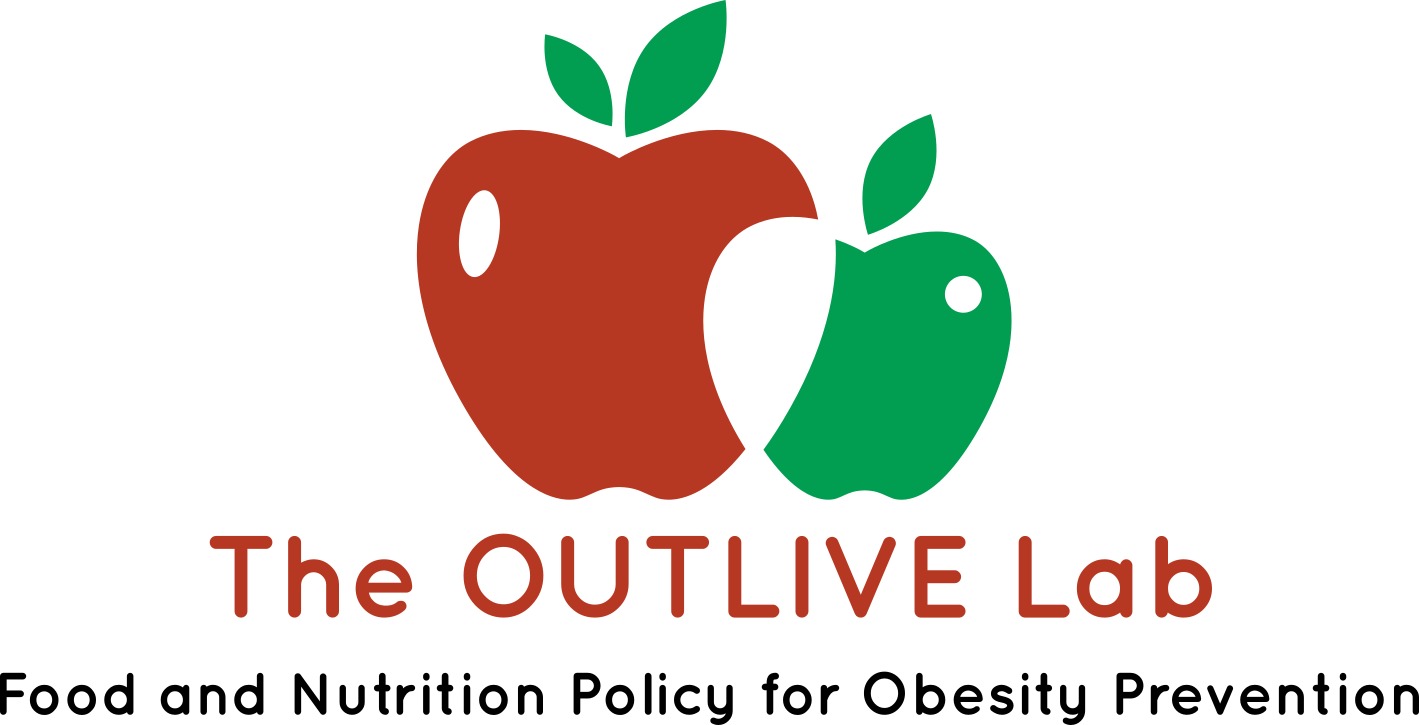Research Impact
Our research has had a significant impact in Canada and internationally.
The studies we have conducted on children’s exposure to unhealthy food marketing in Canada as well as our findings demonstrating the gaps in current self-regulatory food marketing regulations helped inform Bill C-252 (An Act to amend the Food and Drugs Act - prohibition of food and beverage marketing directed at children) and its accompanying regulations.
Our research has also informed the policy position and advocacy efforts on food and beverage marketing to children of the Stop Marketing to Kids Coalition and its more than 100 participating organizations including the Canadian Cancer Society, Canadian Dental Association, Chronic Disease Prevention Alliance of Canada, Diabetes Canada, Dietitians of Canada, Heart and Stroke Foundation, and Quebec Coalition on Weight-Related Problems among others.
Media appearances
Our research on unhealthy food marketing to children has been featured repeatedly in the national media. Check out the links below to access recent interviews with television, radio, and print journalists on our research:
CTV News: 'Unrelenting' fast-food ads using privacy 'loopholes' to target children: study (October, 2023). News article featuring interview with Dr. Potvin Kent on data collected from children by fast food and dine-in restaurant apps.
Ottawa Citizen: Not so gr-r-reat: Kids are influenced by 'spokes characters,' uOttawa researcher says (June, 2023). News article featuring interview with Dr. Potvin Kent on the influence of spokes characters and licensed characters on children’s intentions to eat, buy, or pester for food products.
Global News: Mascots like Tony the Tiger are swaying kids to eat junk food, putting health ‘at risk’ (June, 2023). News segment featuring interview with Dr. Potvin Kent on the push to regulate colourful, cartoon advertising for children.
Radio Canada: L’épicerie: Influenceurs et malbouffe (March, 2023). Episode featuring interview with Dr. Potvin Kent on unhealthy food and beverage marketing to children by social media influencers.
CTV News: Canadian kids see thousands of ads for unhealthy foods on social media: study (October, 2018). News segment featuring interview with Dr. Potvin Kent on children’s exposure to unhealthy food marketing online.
Our Most Noteworthy Findings:
-
- Children in Canada are viewing high levels of food and beverage marketing on television, digital media (websites and social media), in schools, movie theatres and supermarkets, and the majority of the products advertised are high in sugar, fat and sodium.
- Globally, Canada has the highest rate of not-permitted food advertisements during child peak viewing times compared to 22 other countries (Kelly et al., 2019).
- The self-regulatory policy design is insufficient in protecting children from unhealthy food and beverage marketing. The nutritional quality of food advertising remains unchanged despite industry commitments to improve the nutritional quality of advertised foods.
-
- On average, children are exposed to 3.7-4.4 food and beverage ads per day, with the majority of ads being for fast-food restaurants (671-551 ads per year) (Potvin Kent et al., 2023).
- French children in Montreal are less exposed to food and beverage ads (43.6 ads per year per station) and child-appealing advertising techniques compared to English children in Montreal (85.3 ads per year per station) and Toronto (83.6 ads per child per station) (Potvin Kent et al., 2023).
- In 2019, children viewed 2234.4 food ads/person/year while adolescents viewed 1631.7 ads/person/year, where most of the advertising was for restraurants, snacks, breakfast food and candy and chocolate. Compared to children, adolescents were exposed to 36.4% more unhealthy food products (Potvin Kent et al., 2023).
- Children and adolescents are heavily exposed to similar marketing techniques, with the most popular techniques used to advertise to both groups being; calls to action, health appeals, child-appealing products and child-appealing special effects (Potvin Kent et al., 2023).
- Rates of television food and beverage advertising are highest among preschooler, child, and adult television programming compared to adolescent programming; however, unhealthy food marketing, such as fast food advertising, is significantly greater during adolescent-targeted programming (Pinto et al., 2020).
-
- Popular social media influencers are a significant source of children’s exposure to unhealthy food marketing on YouTube, Instagram and TikTok. The majority of products/brands promoted by influencers popular among children are less healthy (Potvin Kent et al., 2024).
- In 2022, children viewed 4067 food marketing instances/child/year, while adolescents viewed 8301 food marketing instances/adolescent/year when using their smartphones/tablets. Most of the advertising was for fast food compared to other food categories (Potvin Kent et al., 2024).
- Caffeinated energy drink companies are extensively promoting their products across social media platforms using marketing strategies that may appeal to adolescents (Ayoub et al., 2023).
- Children and adolescents are highly exposed to food marketing on social media apps. On average, children view approximately 1500 food marketing instances per year, while adolescents are exposed over 9000 times annually (Potvin Kent et al., 2019).
-
Overall:
- Approximately $628.6 million was spent advertising food and beverage products in Canada in 2019 across television, radio, out-of-home media, print media and popular websites, with television accounting for 67.7% of expenditures, followed by digital media (11.8%) (Potvin Kent et al., 2022).
- 55.7% of expenditures were devoted to restaurant advertising and 87.2% of classified spending was spent advertising products and brands classified as “unhealthy” (Potvin Kent et al., 2022).
- Across all media channels (excluding digital), advertising expenditures were 14.1% lower in 2019 vs 2016 (Potvin Kent et al., 2022).
Children:
- Approximately $57.2 million was spent advertising 158 child-targeted products in Canada in 2019 across television, radio, out-of-home media, print media and popular websites, with television accounting for 77% of expenditures and the food categories with the highest expenditures were candy/chocolate (30%) and restaurants (16%) (Potvin Kent et al., 2023).
- Across all media channels (excluding digital), advertising expenditures were 9% lower in 2019 vs 2016, but the majority of products advertised to children are still unhealthy (Potvin Kent et al., 2023).
- Quebec’s ad expenditure per child per capita is $9.40 and $13.91 in the rest of Canada, which suggests Quebec's Consumer Protection Act is having an impact, but is not sufficiently protecting children (Potvin Kent et al., 2023).
Adolescents:
- Approximately $110.9 million was spent advertising 61 food products heavily advertised to adolescents in Canada in 2019 across television, radio, out-of-home media, print media and popular websites, with television accounting for 77% of expenditures and fast food restaurants accounting for 51% (Potvin Kent et al., 2022).
- Quebec’s ad expenditure per adolescent per capita is $45.15 compared to $58.44 in the rest of Canada (Potvin Kent et al., 2022).
-
- The advertising ban in Quebec that has existed in that province since 1980 is having a positive impact. Compared to children outside of Quebec, children in Quebec view fewer food and beverage ads on children's specialty channels, fewer unhealthy child-targeted products such as sugary cereals, and advertising techniques such as the use of spokes-characters and licensed characters are used much less frequently. The Anglophone minority in Quebec is not protected by the Quebec advertising ban that has existed since 1980 in that province (Potvin Kent et al., 2023).
- Exposure to fast food marketing is positively associated with brand preferences and intake among youth age 10-17 (Bagnato et al., 2023).
-
- 97-100% of food and beverage advertisements shown prior to children’s movies at movie theatres in Ontario were considered not permissible for marketing to children (Wong et al., 2020).
- In a study on 154 primary and secondary schools in Canada, 84% of schools reported having at least one type of food marketing in the school (Potvin Kent et al., 2019).
-Food companies, including many that largely sell and market unhealthy products, are heavily involved in physical activity and nutrition-related initiatives in Canada, 47% of which are targeted to children (Potvin Kent et al., 2020).
-Industry stakeholders are highly active in their attempts to influence Canadian nutritional policies using a wide variety of strategies in an attempt to influence policy, including: “framing the debate on diet- and public health-related issues”, “promoting deregulation”, “shaping the evidence base”, “stressing the economic importance of industry”, and “developing and promoting alternatives to proposed policies” (Vandenbrink et al., 2020).


